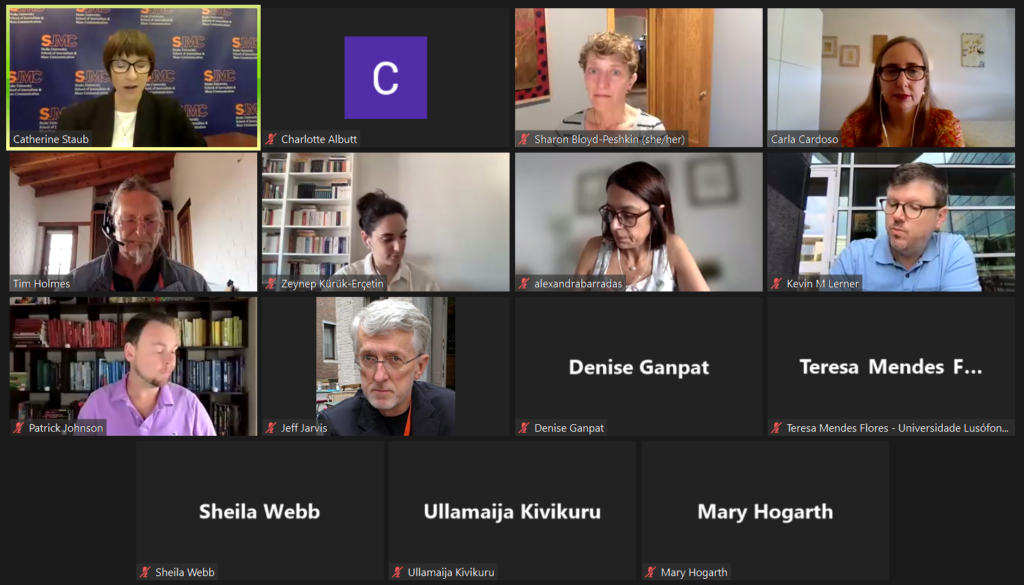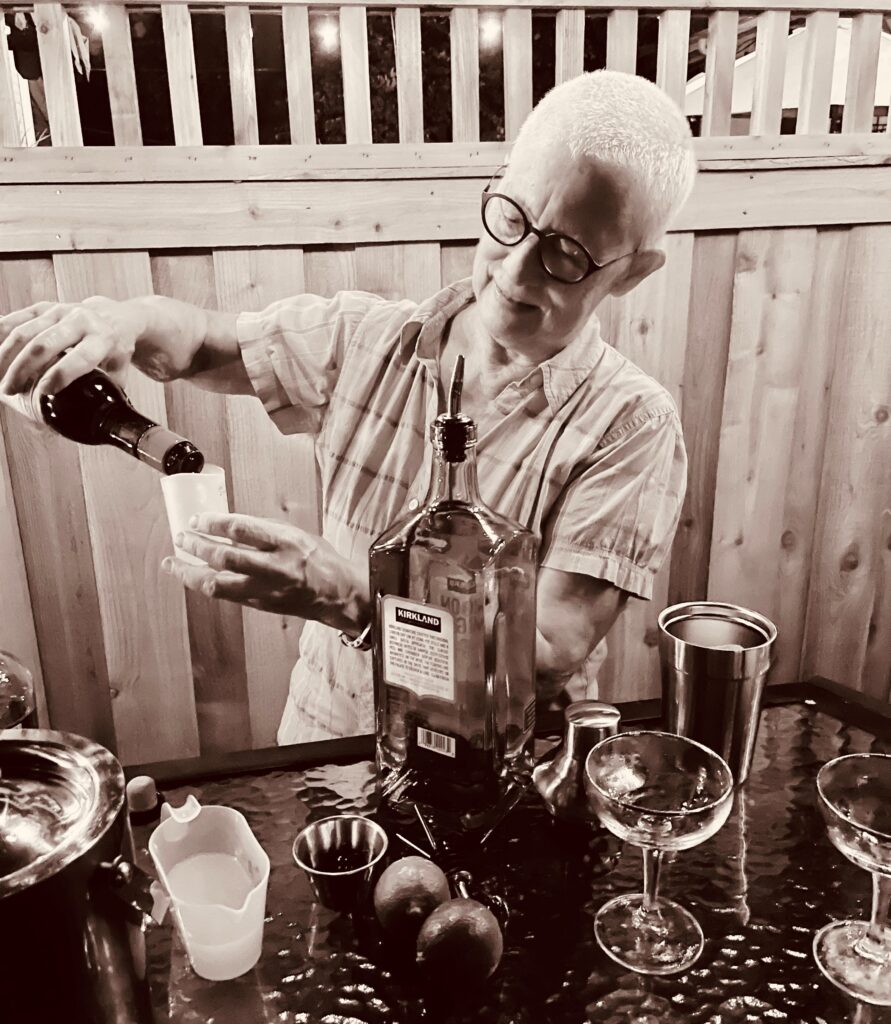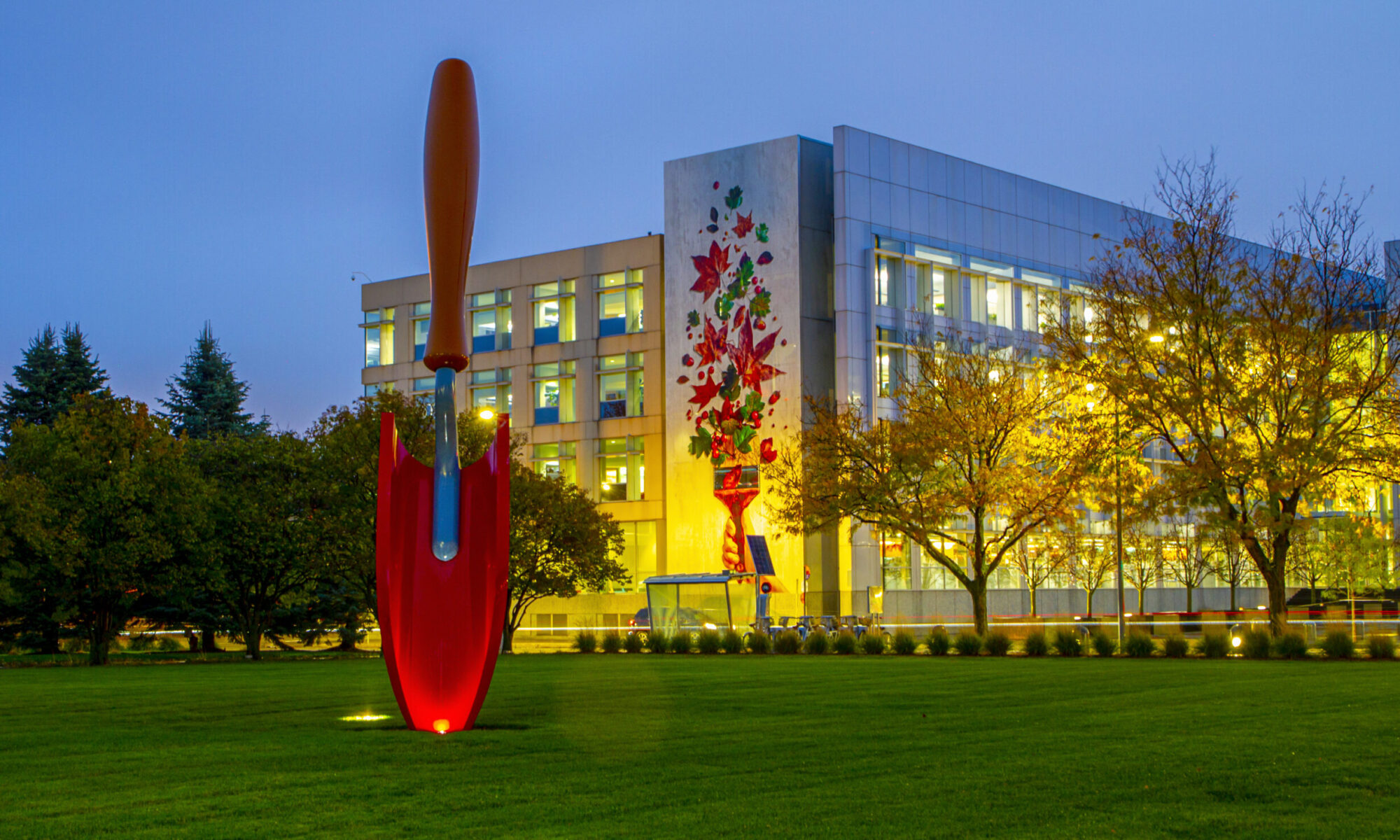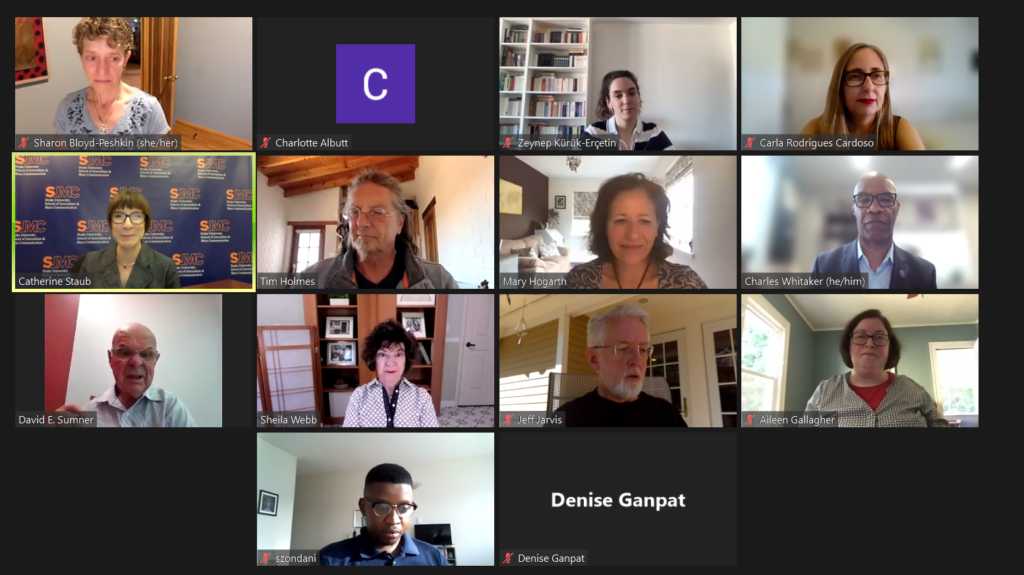By Charlotte Albutt and Mary Hogarth



The final day kicked off with a debate among our talking circle with experts and academics from across the globe ready to talk about their favourite topic – magazines.

“Today is a prolific time for magazine studies,” said conference founder Tim Holmes, who started the talking circle with a few special announcements.
He congratulated those committee members and delegates who have published books during the past two years.
Texts included Transforming Magazines, edited by Tim and Dr Carla Rodrigues Cardsos, a curation of papers presented at the previous conference.
“It really is the year of magazine studies,” echoed Carla, who announced opening the first-ever research lab dedicated to magazine studies, The Mag Lab.
The new lab will form a significant research centre with transnational input and link to the conference.
Last but not least was the big question where will Mapping the Magazine 8 be held? Carla was also delighted to reveal that she will host the next event in 2024 at the University of Lisbon in Portugal.
A round-up from magazines and content
Panel four kicked off with Nur Zeynep Kuruk Ercetin from Boğaziçi University in Turkey, who explored A moment of transformation: Tracing the ‘modern’ Turkish family in Aile magazine through its translated content. This was followed by Rita Gracio Lusofona, from Lusófona University, who discussed peripheral poetry periodicals.
Rita presented insights into poet editors and contributors using magazines to showcase their work, which prompted a discussion on collaboration opportunities between poets and artists.
Carla Rodrigues Cardoso, Teresa Mendes Flores, Orlando Franco, Alexandra Barradas and Rute Muchacho from Lusófona University in Portugal completed the line-up talking about pedagogy. Their presentation on using magazines as multilevel pedagogical tools took the panel back to the classroom, showing the work and opinions of student journalists.
The final MTM panel began with a presentation by Sheila Webb from Western Washington University.
Her paper, Bon Appetite: a legacy food magazine as a site of social reckoning, explored two key themes: authenticity and appropriation. She delved into the language used by Bon Appetite and the structure of features which could be classed as appropriating cultures.
Presentations culminated with a talk from research partners Patrick Johnson, University of Iowa, and Bobbie Foster, University of Maryland, who analysed the magazine Fangoria. Their paper was called they grow up and start dying: The construction of cultural authority and journalism boundaries through detachment/attachment in Fangoria.
Ending on a “Happy” note

A special guest appearance from The Bumbling Mixologist bought the two-day event to a close with Happy Hour and a lesson on making MTM’s new signature cocktail, Glossy Covers.
While sipping cocktails, presenters and committee members shared their favourite magazines and explained their significance.


